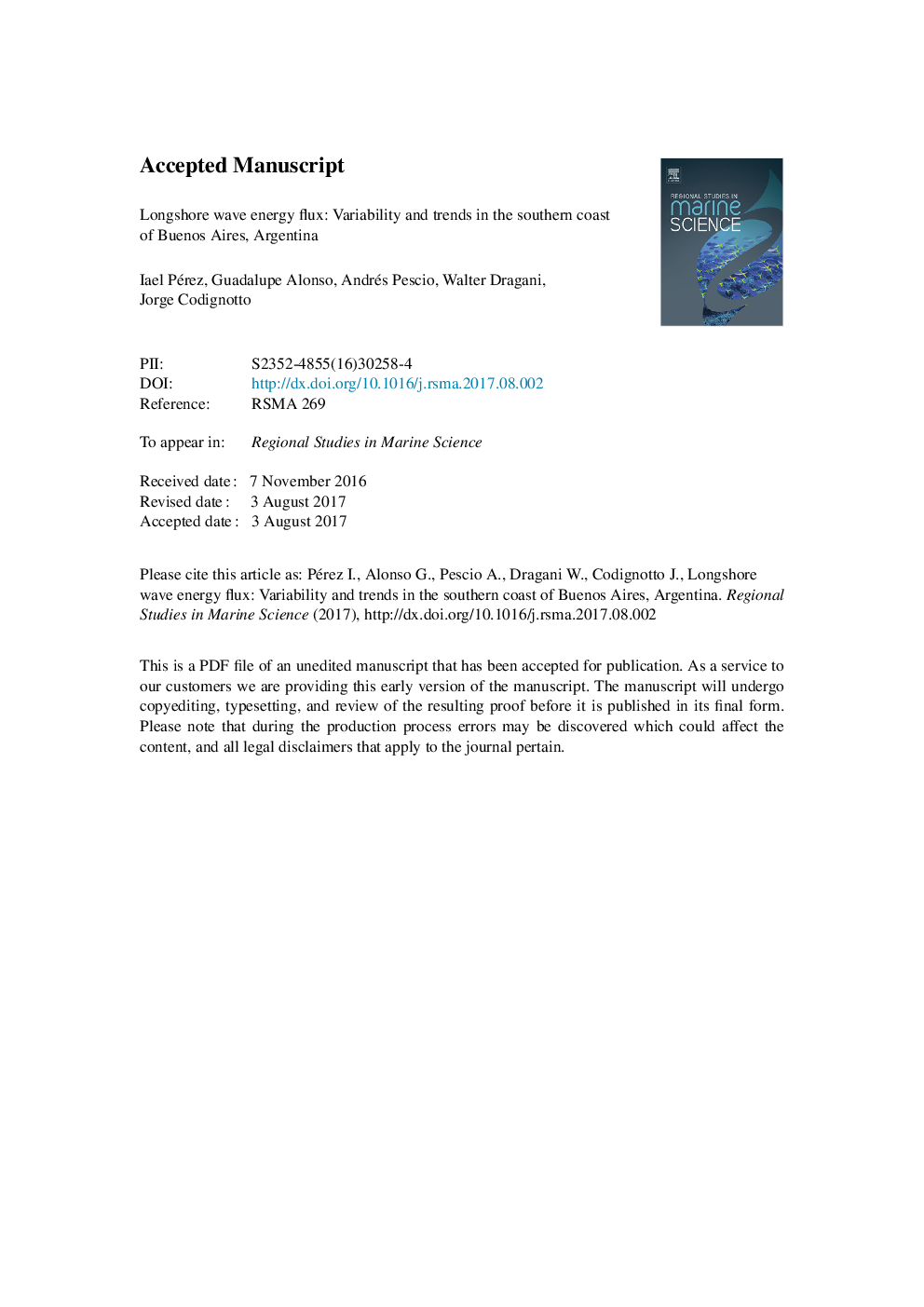| Article ID | Journal | Published Year | Pages | File Type |
|---|---|---|---|---|
| 8872668 | Regional Studies in Marine Science | 2017 | 24 Pages |
Abstract
Variability and trends of the longshore wave energy flux were analyzed between BahÃa Blanca and Mar del Plata, along the southern coast of Buenos Aires, Argentina. Longshore energy flux was assessed from wave parameters obtained from long-term numerical simulations carried out with a validated model (Simulated Waves Nearshore model) for the period 1979-2012. It was determined that the longshore energy flux flows predominantly eastwards. Mean values and standard deviations of the longshore flux increased eastwards. Two different areas were defined in the study region: the eastern area, characterized by higher values of longshore energy flux, and the western one, where fluxes were approximately 14% of the eastern values. Longshore wave energy flux did not present significant long term trends in the study region. High inter-annual variability in longshore wave energy flux was observed especially at the eastern area of the study region. Possible connections between this inter-annual variability and climatic indices related to El Niño / Southern Oscillation and the Southern Annual Oscillation were investigated. Significant correlation coefficients were obtained for both indices at the easternmost locations of the study region. This indicates that both climatic anomalies can impact on the wave climate and littoral processes along the southern coast of Buenos Aires.
Related Topics
Physical Sciences and Engineering
Earth and Planetary Sciences
Oceanography
Authors
Iael Pérez, Guadalupe Alonso, Andrés Pescio, Walter Dragani, Jorge Codignotto,
